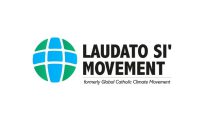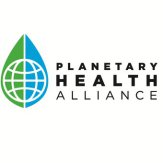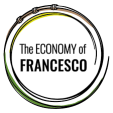Laudato Si Practise (selection)
There are hundreds of examples of good practice in the church and the ecumenical movement within the spirit of the Encyclical Laudato Si - these examples are only few of them.
Interdicasterial Working Group of the Holy See on Integral Ecology:JOURNEYING TOWARDS CARE FOR OUR COMMON HOME Five Years after Laudato Si’:The present text is being published on 31 May 2020, the Solemnity of Pentecost, the liturgical feast on which, five years earlier, on 24 May 2015, the Encyclical Letter Laudato Si’ of the Holy Father Pope Francis on care for our common home was published. The present document was prepared by institutions belonging to the Interdicasterial Working Group of the Holy See on Integral Ecology, established in 2015 for the promotion and implementation of integral ecology. The Working Group brings together the institutions associated with the Holy See that are most involved in this area, as well as several Episcopal Conferences and Catholic organizations.
Journey Towards Care for Our Common Home[...]
PDF-Dokument [4.6 MB]
Care for our Common House -The Environmental Movement of Olancho - Catholic
The Environmental Movement of Olancho (MAO) is a coalition of subsistence farmers and community and religious leaders in the Olancho department who are defending their lands against uncontrolled commercial logging. Father José Andrés Tamayo leads the campaigns with local communities in northern Olancho against intense deforestation and logging in the Olancho area.
A Rocha: Pollination in Creation: A Look Behind the Scenes
Care for Creation - The Catholic Youth Network for Environmental Sustainability in Africa
The Catholic Youth Network for Environmental Sustainability in Africa (CYNESA) is the platform for all young Catholics in Africa, promoting responsible stewardship of the environment.
Care for Creation - The National Altmühltal-Agenda 21 Project (catholic and ecumenical), Diocese of Eichstätt, Bavaria
European Nature Conservation Year (ENCY 95) provided the starting point for the Altmühltal project in the diocese of Eichstatt in Bavaria. This project, was a example of the Churches' new ecological concerns, was selected as a national project in 1995 by the German National Organising Committee for ENCY 95, under the patronage of the President of the Federal Republic, Mr Roman Herzog. It has, accordingly, been supported by the Federal Foundation for the Environment from 1995-1999.
The Second European Ecumenical Assembly will take place in Graz (Austria) from 23 to 29 June 1997. bringing together thousands of Christians from all Churches from all over Europe to look at the many challenges facing our societies and to advocate practical measures for reconciliation, justice and solidarity. The Council of Europe, an organisation which since its foundation has worked towards the same goals - human rights, respect for minorities, tolerance, in short for a better quality of life - has decided to play an active part in this important initiative, particularly in the field of the environment. Surprising though it may seem. Churches, all Churches, and all religions are taking an increasingly active interest in their responsibility for the Creation, calling upon their followers
Naturopa-Francis of Assisi Academy.pdf
PDF-Dokument [15.5 MB]
Care for Creation - Diocese of Eichstätt
The Diocese of Eichstatt applies within the Catholic Church as a pioneer for church environmental management starting 1994 with the foundation of the Environment Comitte at the Diocese Council which had a catalyst function. From 1995-1999 the Diocese of Eichstatt implemented the Sustainable Diocese project (Part project of the Altmühtal Agenda 21) involving over 100 parihes. In 2001 the Environmental Guidelines of the Diocese of Eichstatt were adopted, inculding a Day of Creation and a Environment Management Project (with 10 institutions) was set up.
Care for Creation - Plankstetten Abbey (1995- )
Two decades ago (1995) the entire agricultural activities of the monastery was converted into a organic agriculture and the monastry is member of Bioland. Under Abbot Gregor M. Hanke OSB the life and economy of the monastery was reconciled with God's creation order. Frater Richard Schmidt OSB, the economist of the monastic property had to know organic farming in the Oasis Steinerkirchen (Heart Jesus missionaries) land successfully introduced in Plankstetten. Meanwhile, the "Green Monastery" in Bavaria is known as a demonstration farm for organic farming.
Care for Creation - Catholic University of Eichstätt-Ingolstadt (1988-)
The KU is since 1992 a pioneer in the theory and practice of sustainability (Rio follow-up process) and has received several awards for this. After the Chernobyl nuclear disaster the Working Group Environment was established 1989 and after the initial environmental review of the University in 1990, the Environment Unit of the Student Convention was founded. The objective was to make the KU to a sustainability leader. Accompanying the Rio Earth Summit in 1992 and later as Rio monitoring organized the Environment Unit of the Student Convention the Environmental Lecture Series continued to run up to the present with more than 100 speakers. 1993 The COPERNICUS University Charter for Sustainable Development was signed by the President Nikolaus Lobkowicz - as the first German university.
Care for Creation - University of Notre Dame
The University of Notre Dame strives to be a leader in sustainable operations, education and research and a role model for responsible citizenship. Notre Dame recognizes its responsibility to conserve the natural environment while promoting long-term economic and social justice for all members of society, and works to foster a pervasive focus on the connection between environmental stewardship and the Common Good.








